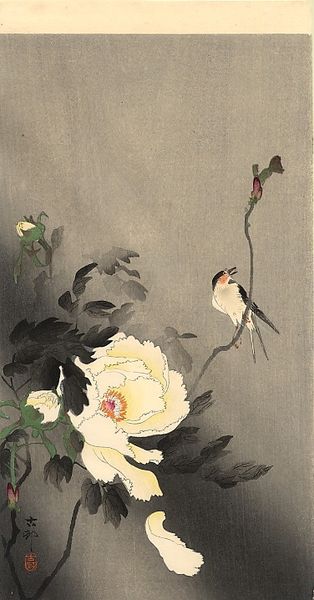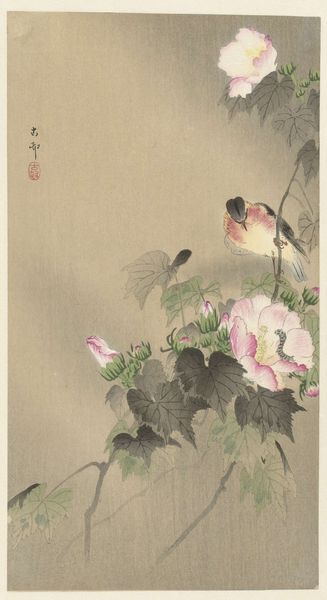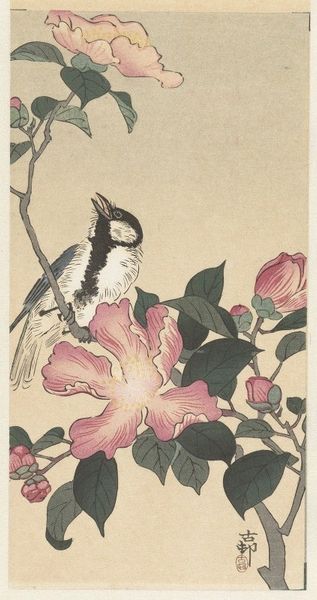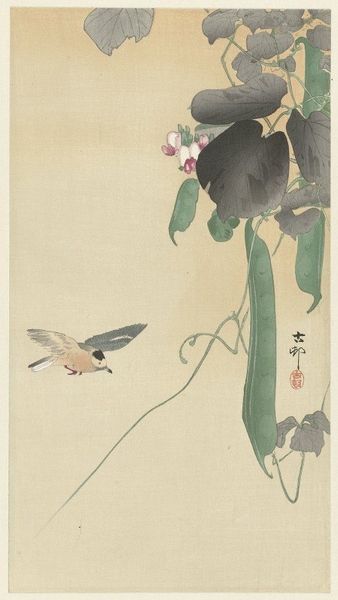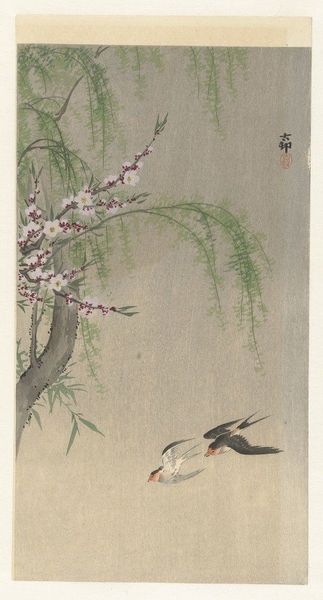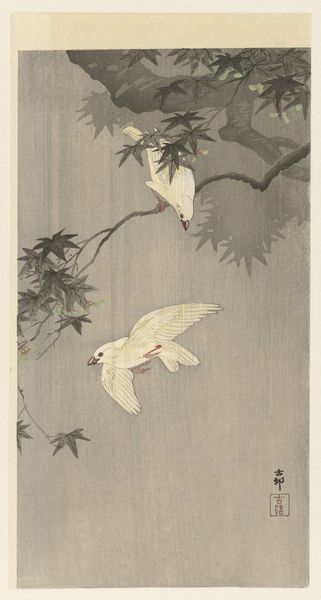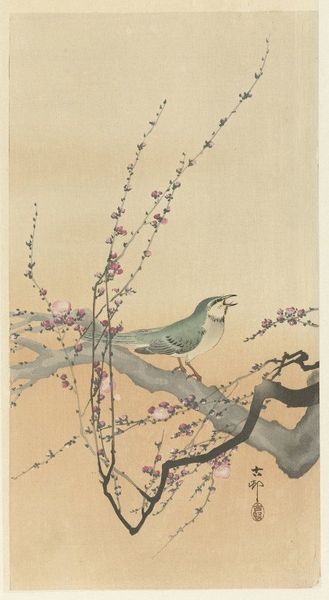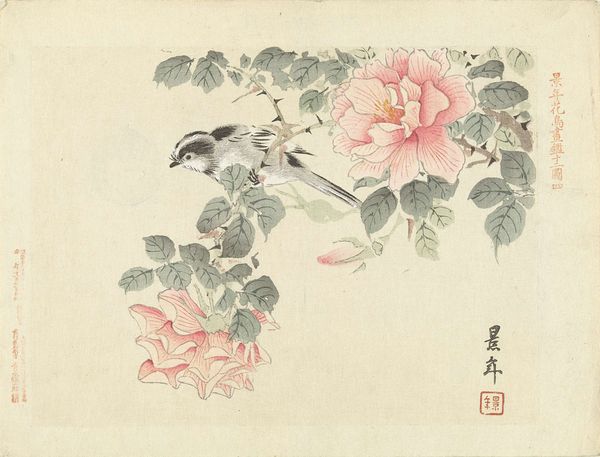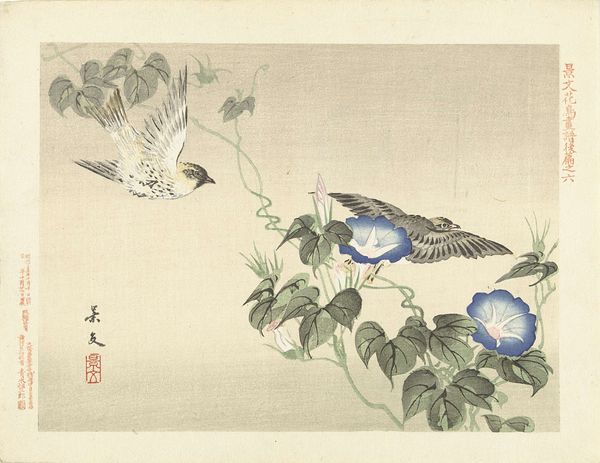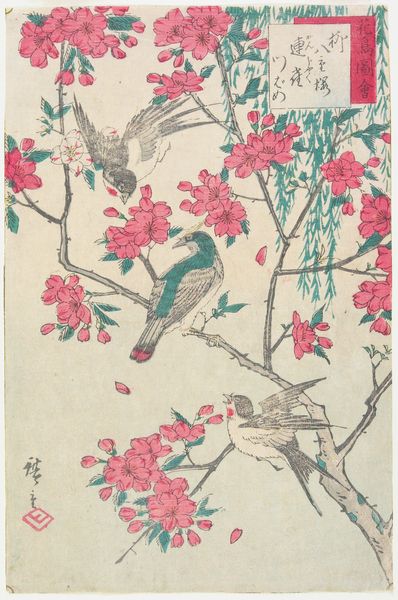
Copyright: Public Domain: Artvee
Curator: Looking at this serene artwork, we see "Swallow with Peony" by Ohara Koson, likely created sometime between 1900 and 1930. It employs the techniques of printmaking and watercolor, doesn't it? Editor: Indeed, and it’s quite striking, isn't it? The immediate feeling I get is one of tranquil observation, a simple moment elevated by Koson’s meticulous craftsmanship and the interplay of grey hues against the pristine peony. The very paper makes it compelling, almost alive. Curator: Absolutely. Koson was a master of Shin-hanga, the "new prints" movement that revitalized traditional Ukiyo-e techniques with a distinctly modern sensibility. This piece reflects that perfectly. There is the blending of East meets West that gained in popularity within global markets. Editor: Shin-hanga's emphasis on artisanal printing techniques shines through. You can almost feel the layering of the woodblocks and the subtle textures. It really blurs the boundaries between fine art and the labor-intensive craft traditions that were once regarded very distinctly. What's more interesting is seeing this in a time of rapid industrialization, something slowing us down instead. Curator: Exactly! Koson became incredibly popular not only within Japan, but internationally too because this allowed westerners a glimpse of Japanese culture. Images of birds and flowers were deemed tasteful for the buyers. Editor: These natural motifs have deep-rooted connections with class and consumerism that reflect a culture obsessed with social harmony, so something delicate like this may appear to some as nothing more than superficial. But still it brings value through these means, because someone poured in the labor, skill, and intention into bringing nature inside our own walls, which isn't easily replicated, is it? Curator: The popularity and success of these works also enabled many artists to have careers during an unsettled and changing landscape after the Meiji Restoration period. Koson in particular was exhibited at several international exhibitions. Editor: Which also says a great deal about how the West engaged with and popularized what it considered acceptable forms of "art." Koson walked this complex, perhaps contradictory path between upholding traditions and navigating demands within a changing world, leaving objects that are complex. It almost seems like a moment stopped in time. Curator: Indeed, seeing Koson’s "Swallow with Peony" through the lens of history illuminates its important role as a commodity traded between nations but that embodies great skill in craft traditions. Editor: Yes, by focusing on the printmaking processes and the way global markets embraced works like this, it invites us to consider artmaking in a more material way; how objects participate and shape our understanding.
Comments
No comments
Be the first to comment and join the conversation on the ultimate creative platform.
